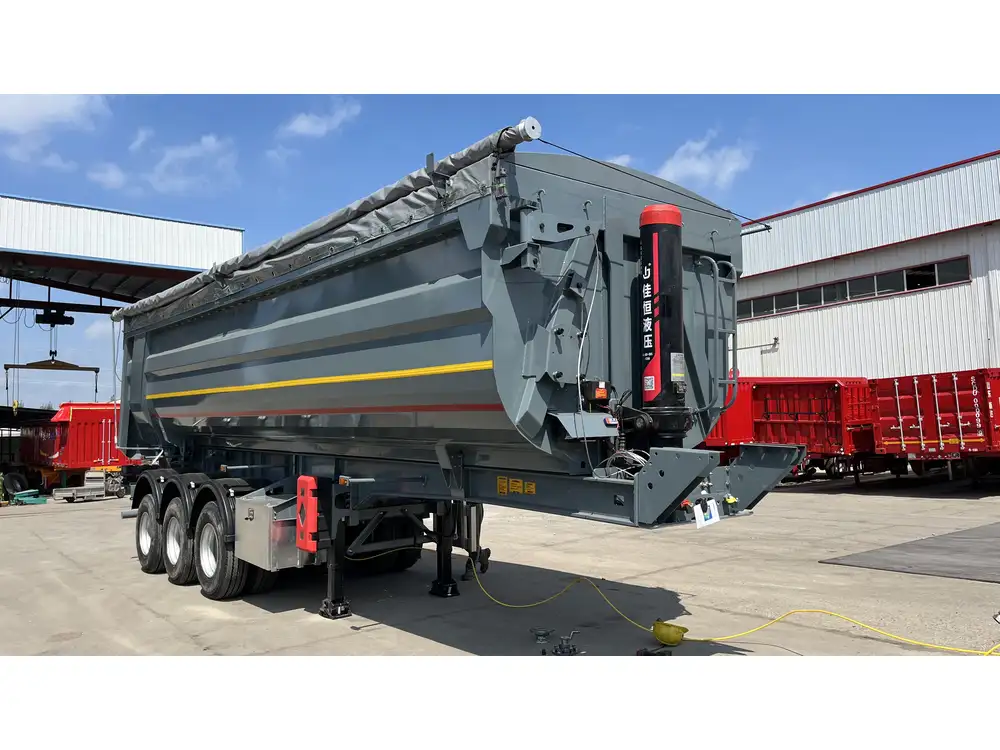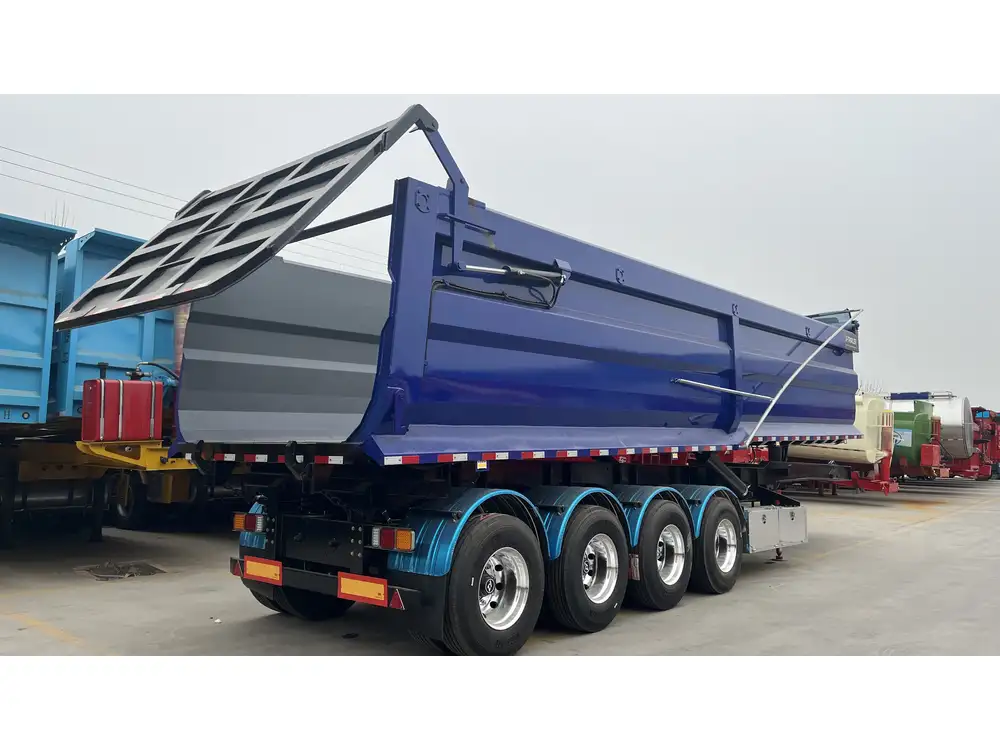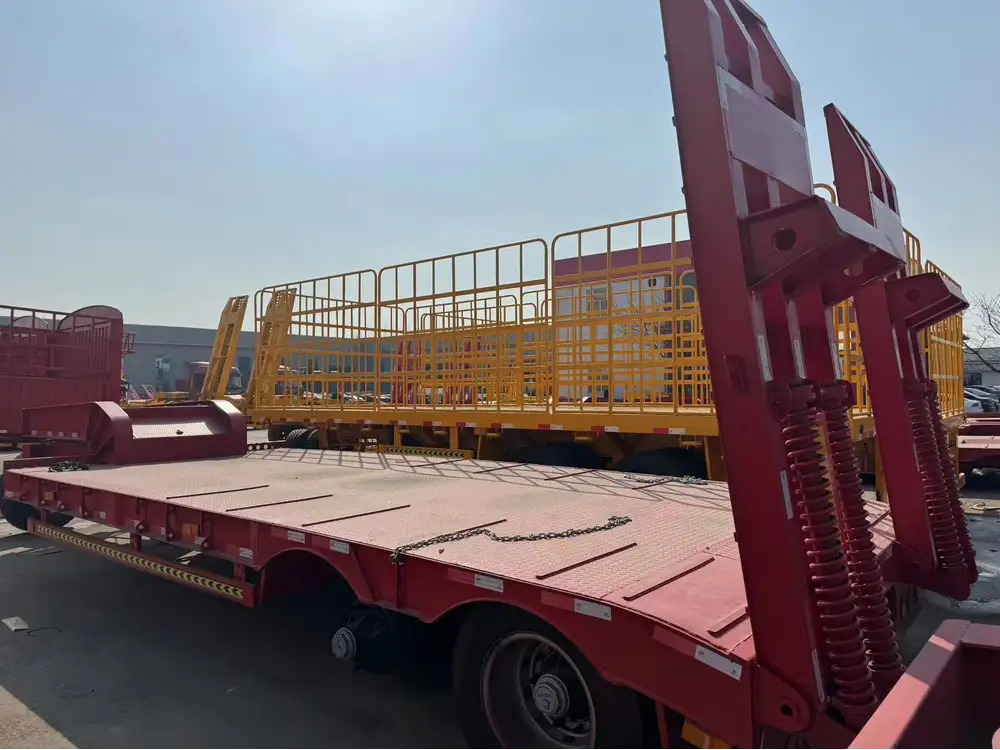Creating a dump trailer for farm tractors is an essential upgrade for enhancing productivity and efficiency on farms. A well-designed dump trailer can handle various tasks, from transporting loose materials like soil or gravel to carrying equipment and supplies. This comprehensive guide examines the steps, materials, and essential functionalities required to create a robust and efficient dump trailer for your farm tractors.
Understanding the Essential Components
To design and build a dump trailer suitable for farm work, understanding its essential components is crucial. Here’s a breakdown of what you will need:
| Component | Description |
|---|---|
| Chassis | The base frame; often constructed with heavy-duty steel. |
| Axles | Essential for mobility; typically equipped with brakes. |
| Tires | Heavy-duty tires capable of handling farm terrain. |
| Bed | The actual dumping bed; can be made of steel or aluminum. |
| Hydraulic System | The mechanism for lifting the bed; essential for dumping. |
| Tailgate | The rear door; can be hinged or removable. |
| Safety Chains | To secure the trailer during transport. |
| Lights and Reflectors | For visibility and safety on the road. |
Step-by-Step Guide to Building Your Dump Trailer

1. Design the Trailer
Before jumping into construction, conceptualize your dump trailer’s design. Factors to consider include size, weight capacity, and intended use. A standard dump trailer might be around 6-8 feet wide and 10-12 feet long, but dimensions can vary based on specific needs.
- Sketch Out Your Design: Include dimensions, components, and an initial look at how everything fits together.
- Materials List: Compile a comprehensive list of materials required for construction.
2. Gather Materials
The quality of your materials will dictate the longevity and durability of your trailer. Gather the following:
- Steel Tubing: For the chassis frame, use heavy-duty steel tubing. Choose appropriately sized tubes; typically, 2″x4″ or 3″x3″ thickness.
- Axles: Heavy-duty axles—consider tandem axles for enhanced stability.
- Tires: Choose tires rated for heavy loads, preferably those designed for trailer use.
- Hydraulic Cylinder and Pump: A single-acting hydraulic cylinder combined with a manual or electric pump will be necessary for lifting.
- Steel Sheets: For the dumping bed. Consider thicker materials for higher durability.
- Welds and Hardware: High-strength bolts, nuts, and other fastening supplies to connect the components.
3. Construct the Chassis
- Frame Assembly: Start by welding the frame according to your design. Ensure precise cuts for a snug fit; the sturdiness of your trailer depends on this when loaded.
- Axle Installation: Mount the axles to the chassis, making sure they’re parallel and level to ensure even weight distribution.

4. Build the Dump Bed
- Construct the Bed: Cut your steel sheets to the appropriate dimensions based on your design.
- Weld the Bed Frame: Create a sturdy frame to support the steel sheets, welding them together.
- Attach the Bed to the Chassis: Use hinges on the front of the trailer bed—this will allow it to tilt backward or sideways when unloading.
5. Install the Hydraulic System
- Select the Right Cylinder: Depending on the height of the dump you desire, choose a hydraulic cylinder with enough lifting capacity.
- Connect the Cylinder: Securely mount the hydraulic cylinder to the bed and chassis, ensuring it has a direct line to operate effectively.
- Hydraulic Pump: Install the hydraulic pump and connect it to the cylinder using hydraulic hoses. Ensure all connections are made tightly to prevent leaks.
6. Finalize the Trailer
- Install the Tailgate: Depending on your preference, either hinge or set up a removable tailgate. This feature enhances versatility in loading and unloading materials.
- Add Safety Chains: Ensure the trailer can be hitched securely by attaching heavy-duty safety chains to prevent accidental unhooking.
- Install Lights and Reflectors: For safety during transport, equip the trailer with the necessary light indicators and reflectors per local regulations.

7. Inspect and Test
Before taking your trailer into operation, conduct a thorough inspection:
- Strength Testing: Fill the trailer with a load similar to your expected use—watch for any structural issues or weaknesses.
- Hydraulic Functionality: Test the hydraulic system to ensure proper functioning—observe for any leaks or jerking motion.
- Tire Pressure: Maintain correct tire pressure, ensuring communicative handling on farm terrains.
Key Features of an Effective Dump Trailer
To ensure your dump trailer serves its intended purpose effectively, it should include the following features:
1. Tipping Mechanism
- Ease of Use: A trailer that tips easily at the press of a button or lever saves time and effort during operations.
- Adjustable Angle: The tipping angle should be adjustable to accommodate different types of materials (e.g., grain vs. rocks).

2. Durability
- Material Quality: Use rust-resistant materials that withstand heavy use and adverse weather conditions.
- Reinforced Corners: Reinforced design at the corners can prevent stress fractures during loading and unloading.
3. Versatility
- Interchangeable Accessories: Consider providing accessories such as side extensions or tarps for load security.
- Multiple Uses: Ensure the trailer is adaptable for transporting various materials like fertilizers, equipment, or bulk feed.
Frequently Asked Questions

What is the average cost of building a dump trailer for farm tractors?
The overall cost can vary based on material choices and design complexity. On average, a standard dump trailer could range from $1,500 to $4,000 in materials alone. Labor costs, if applicable, would be in addition to that.
How much weight can a dump trailer hold?
A dump trailer generally has a weight capacity ranging from 2,000 lbs to 10,000 lbs, depending on the axle configuration and material strength. Always refer to your specific design calculations for exact figures.
Is it possible to convert an existing trailer into a dump trailer?
Yes, converting a flatbed or utility trailer into a dump trailer is feasible by adding a hydraulic system and modifying the bed. Ensure to consider structural reinforcement based on load demands.

Can I build a dump trailer on my own?
Yes, with the right tools, materials, and some welding skills, constructing a dump trailer is possible. However, consulting a professional, especially for important functional components like the hydraulic system, is advisable.
Conclusion
Building a dump trailer for your farm tractor is a rewarding project that can significantly augment farm operations. By following a well-structured approach and ensuring the use of high-quality materials, you can create a durable, reliable, and effective dump trailer that meets your farming needs. Embrace the process of design and construction, and transform the way you manage materials on your farm with this functional and versatile dump trailer.



